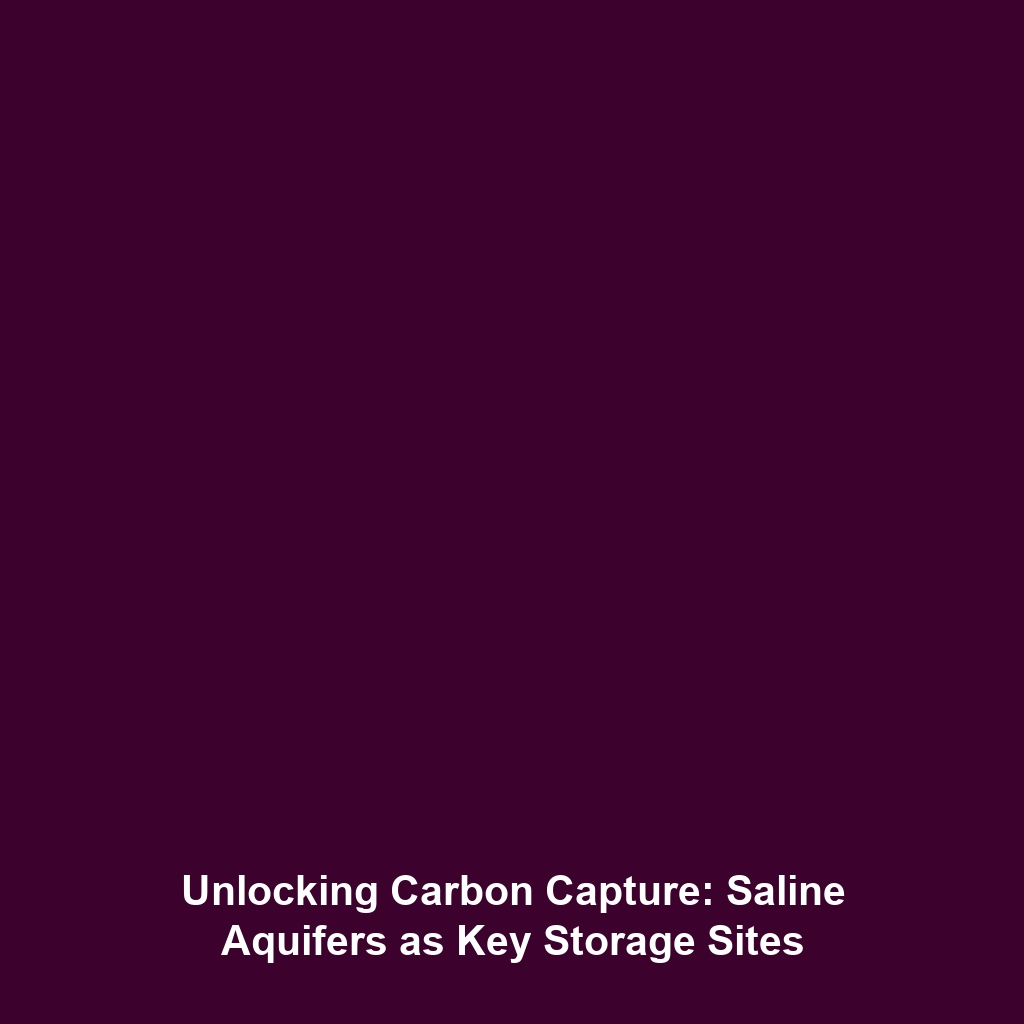Scaling Carbon Capture & Storage (CCS) to Meet Global Climate Targets
Introduction
As the world grapples with climate change, the pressing need for technologies that reduce carbon emissions has never been more critical. Carbon Capture and Storage (CCS) plays a pivotal role in achieving global climate targets. This article illuminates why CCS must scale significantly, emphasizing the necessity for greater investment, infrastructure development, and supportive policies. Not only does CCS serve as a viable solution to mitigate greenhouse gas emissions, but it also offers an avenue for sustainable energy transition, crucial for combating climate change.
Key Concepts
Understanding Carbon Capture & Storage
Carbon Capture and Storage (CCS) involves capturing carbon dioxide emissions originating from industrial processes and storing it safely underground to prevent it from entering the atmosphere. Implementing CCS on a larger scale is essential for limiting global warming and is integral to various emission reduction pathways outlined in national and international climate strategies.
Investment and Infrastructure Needs
To effectively scale CCS, significant investments in technology and infrastructure are required. This includes the development of:
- Advanced capture technologies capable of efficiently extracting CO2 from emissions sources.
- Transportation systems for moving captured CO2 to storage sites.
- Long-term storage facilities that ensure the safe confinement of CO2.
Applications and Real-World Uses
CCS technologies have promising applications in various industries. Some significant examples include:
- Utilization in fossil fuel power plants where CO2 emissions can be captured before release.
- Enhancing oil recovery processes through CO2 injection, which not only exploits natural resources but also sequesters more carbon.
- Integration with bioenergy (BECCS) to create negative emissions, crucial for net-zero targets.
Current Challenges
Despite the potential of CCS, several challenges hinder its widespread implementation:
- High Costs: The financial burdens associated with CCS technology development and infrastructure establishment.
- Regulatory Hurdles: Lack of supportive legislation and policies that can stimulate investment and deployment.
- Public Acceptance: Misunderstandings and concerns regarding the safety and efficacy of CO2 storage.
Future Research and Innovations
Ongoing research aims to revolutionize CCS technology through:
- Development of more affordable and efficient capture methods.
- Innovations in CO2 storage techniques, increasing safety and reliability.
- Exploring carbon utilization pathways, converting captured CO2 into valuable products.
Conclusion
Scaling Carbon Capture and Storage is essential for meeting global climate targets. Enhanced investment, robust infrastructure, and proactive policy support will be critical for advancing CCS technologies. Addressing current challenges and fostering innovation in this field can lead to significant environmental benefits. For further exploration, visit our sections on Investment in CCS and Next-Gen CCS Technologies.








